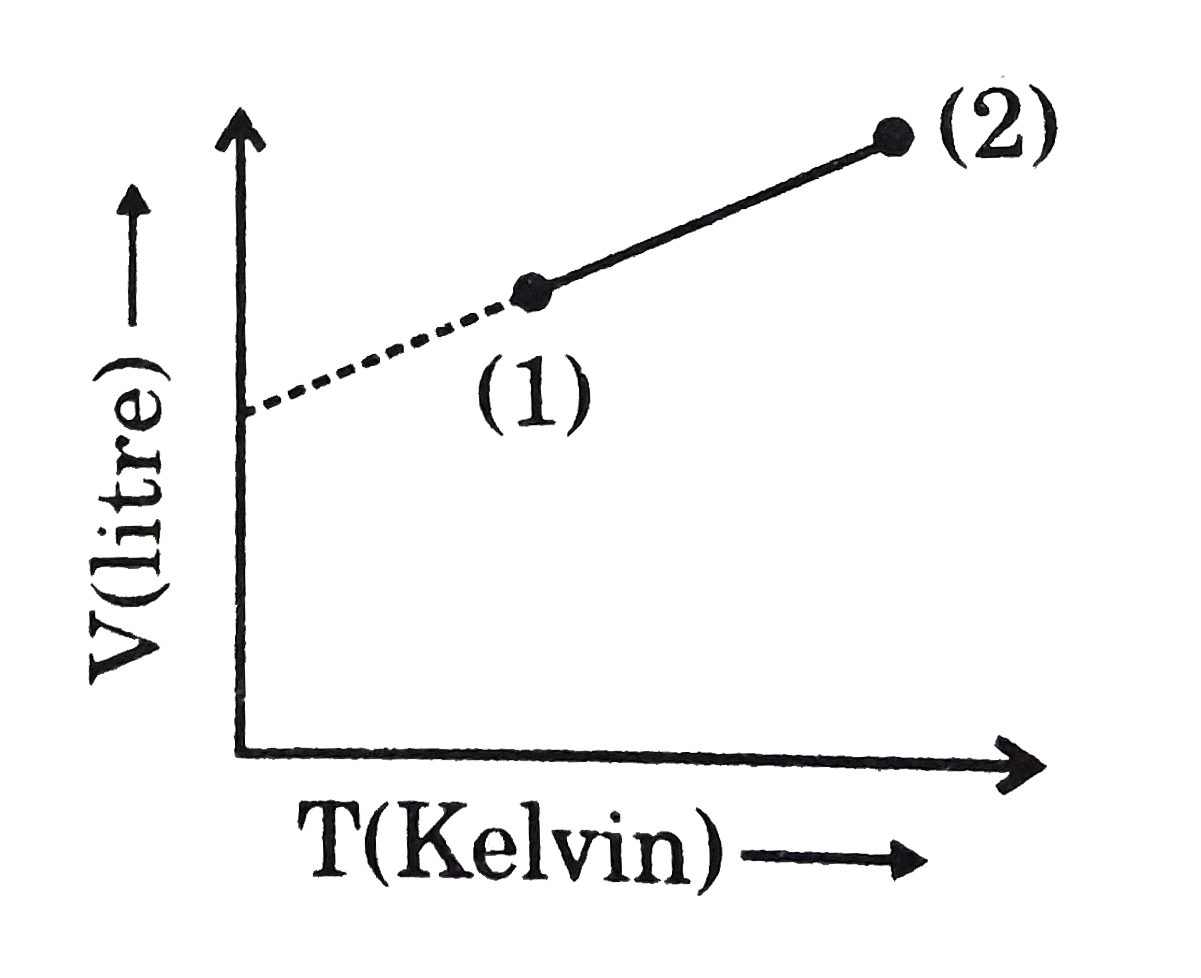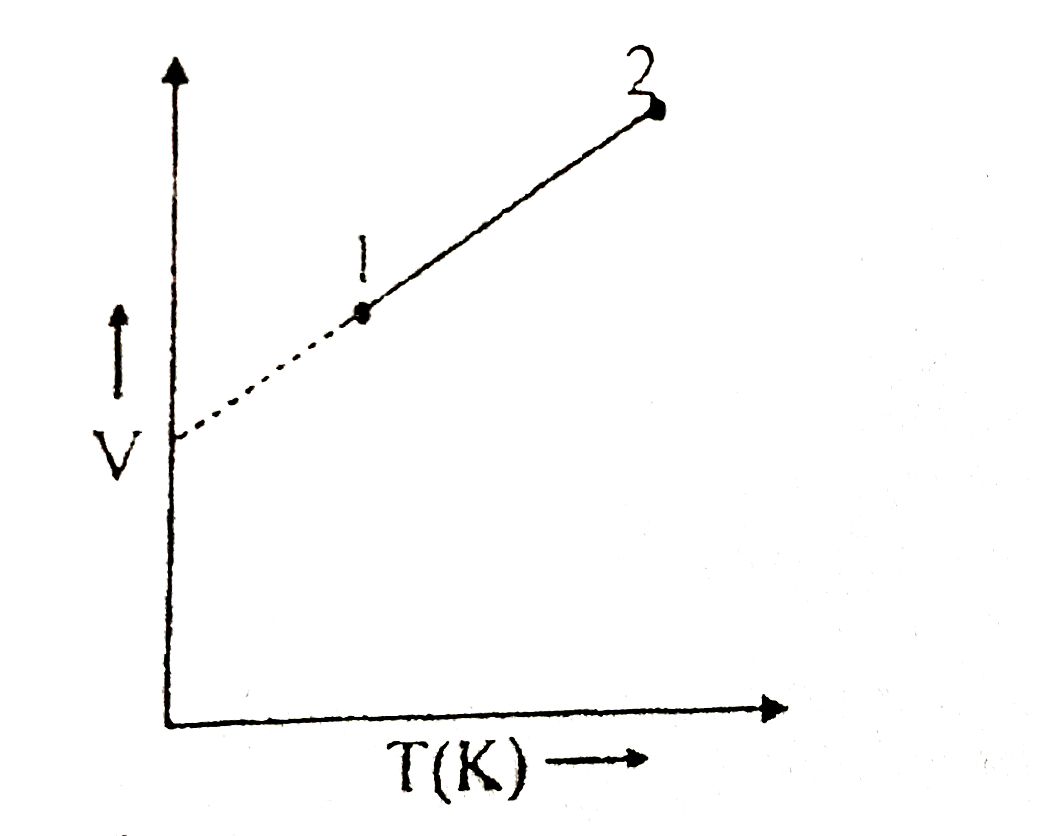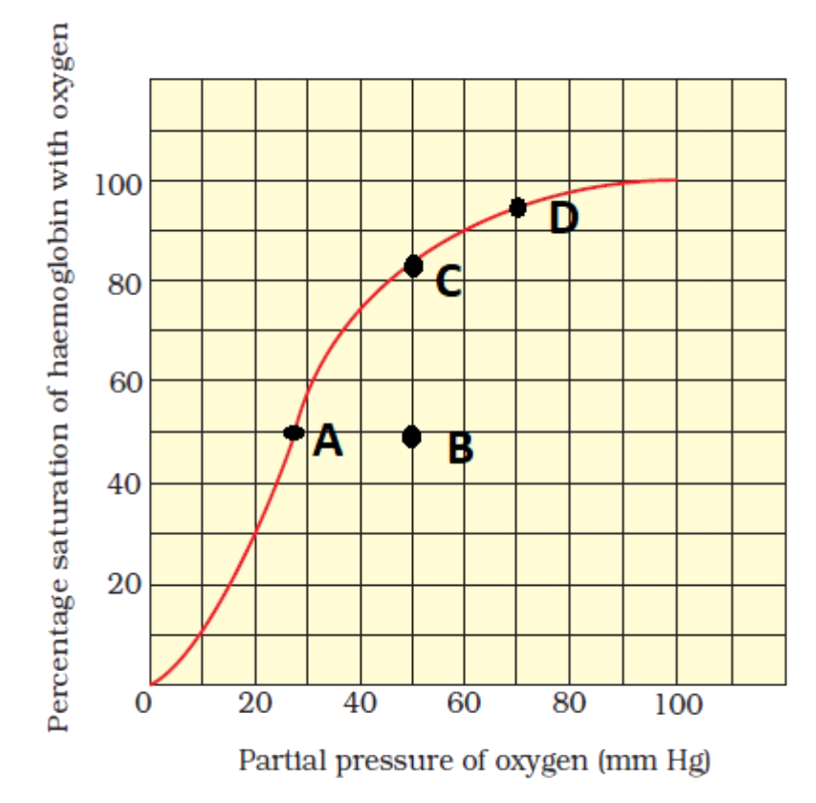For the below graph which of the following combination is correct, (n represents mole and P represent pressure)
(I) If n is constant throughout then P at 2nd point must be greater than at 1st point.
(II) If n is doubled in moving from 1st point to 2nd point then P also doubles in the process.
(III) If n is constant then P is maximum at point (1).

I is true
II is true
Both II and III are true
I, II and III all are correct
The correct Answer is:A
Step by step video, text & image solution for For the below graph which of the following combination is correct, (n represents mole and P represent pressure) (I) If n is constant throughout then P at 2nd point must be greater than at 1st point. (II) If n is doubled in moving from 1st point to 2nd point then P also doubles in the process. (III) If n is constant then P is maximum at point (1). by Chemistry experts to help you in doubts & scoring excellent marks in Class 12 exams.
Topper's Solved these Questions
- BOOK - GRB PUBLICATIONCHAPTER - GRAPHICAL INTERPRETATIONEXERCISE - C. Atomic Sturcture1videos
GRAPHICAL INTERPRETATION
- BOOK - GRB PUBLICATIONCHAPTER - GRAPHICAL INTERPRETATIONEXERCISE - Atomic Sturcture9videos
GRAPHICAL INTERPRETATION
- BOOK - GRB PUBLICATIONCHAPTER - GRAPHICAL INTERPRETATIONEXERCISE - B. Gaseous State1videos
GRAPHICAL INTERPRETATION
- BOOK - GRB PUBLICATIONCHAPTER - F-BLOCK ELEMENTSEXERCISE - Subjective type7videos
F-BLOCK ELEMENTS
- BOOK - GRB PUBLICATIONCHAPTER - HYDROCARBON (ALIPHATIC)EXERCISE - Previous years jee questions28videos
HYDROCARBON (ALIPHATIC)
Similar Questions
Knowledge Check
- Question 1 - Select One
For the given graph which of the following is correct : (n = mole of gas and P = Pressure)
 AP2>P1 with n is constantBP2<P1 with n is constantCP2=P1 with n is constantDcan't compare P1 and P2
AP2>P1 with n is constantBP2<P1 with n is constantCP2=P1 with n is constantDcan't compare P1 and P2 - Question 2 - Select One
Which of the following relations is /are correct?
(i) x/m= constant (at high pressure)
(ii) x/m= constant ×P1/n (at intermediate pressure)
(iii) x/m= constant ×Pn (at low pressure)Aall are correctBall are wrongC(i) and (ii) are correctD(iii) is correct - Question 3 - Select One
Which of the following pairs represents 1st and 2nd most electronegative elements of the periodic table respectively ?
ACl, FBF, CICF,ODI, C
Let P(n) be the statement 3n>n . If P(n) is true, P(n+1) is also true.
View SolutionWhich of the following relations is (are) correct according to Freundlich ?
(i) x/m = constant
(ii) x/m = constant ×p1/n(n>1)
(iii) x/m = constant ×pn(n>1)View SolutionThere are n points in a place in which p point are collinear. How many lines can be formed from these points
View SolutionTwo identical sound S1 and S2 reach at a point P is phase. The resultant loudness at point P is n dB higher than the loudness of S1 the value of n is :
View SolutionLight wave enters from medium 1 to medium 2. Its velocity in 2nd medium is double from 1st. For total internal reflection, the angle of incidence must be greater than
View Solution


